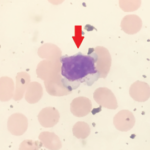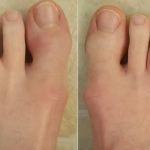Juvenile Arthritis
Often, rheumatologists use the 1997 classification criteria to diagnose children with JIA, a group of diseases that lasts for six weeks or longer in children ages 16 years or younger. These diseases include systemic JIA, oligoarthritis, polyarthritis, psoriatic arthritis, enthesitis-related arthritis (ERA) and undifferentiated arthritis.1
In systemic JIA, “there may be a delay before synovitis develops, often up to several months,” Dr. Miller said. Children with oligoarticular JIA may also have arthralgias for weeks or months before synovitis develops, as well as atrophy of extensor muscles. “These children may require splinting. This is a group in whom uveitis occurs—often asymptomatic,” he said.
Children with polyarticular JIA often have arthritis that affects the small joints in their hands and cervical spine, and typically have a chronic disease course. A subset of children with clinical oligoarticular arthritis exists, and these children have a more aggressive, chronic disease course, said Dr. Miller. “None of the JIA subtypes are homogenous. Children with JIA may need physical or occupational therapy and also splinting.”
‘School absences suggest the possibility of a pain syndrome.’ —Dr. Miller
Children with enthesitis may present with arthritis followed by enthesitis or pain over the attachment of tendons or ligaments to bone, such as over the Achilles tendons or plantar fasciae. Some children with other JIA subtypes can also present with enthesitis in addition to synovitis, Dr. Miller noted.
“It’s actually rare that we see advanced spine disease resulting in ankylosis in children with [enthesitis-related arthritis]. I’ve only seen this a couple of times in boys who were HLA-B27 positive,” said Dr. Miller. “Enthesitis may take months or even years to manifest.”
Magnetic resonance imaging (MRI) is an effective tool to detect joint erosions and bone marrow edema in children with enthesitis-related arthritis. And there may be a family history of the disease, he said.
Laboratory Tests
Differential diagnosis helps determine which laboratory tests to order, said Dr. Miller. Consider SLE in differential diagnosis for children who present with arthralgias as well.
Up to half of children with active synovitis and juvenile arthritis have normal erythrocyte sedimentation rates, he stressed.2 Over time, repeat blood tests may help diagnose the cause of unexplained pain.
“I’ve had patients with normal differentials who then had neutropenia on a subsequent test. One child had leukemia. Children with leukemia don’t always have abnormal blood tests, so it may be helpful to repeat these tests over a few months while they’re having symptoms. There are cases of children with leukemia presenting with a definite synovitis, but usually the pain is over the metaphysis,” said Dr. Miller.



